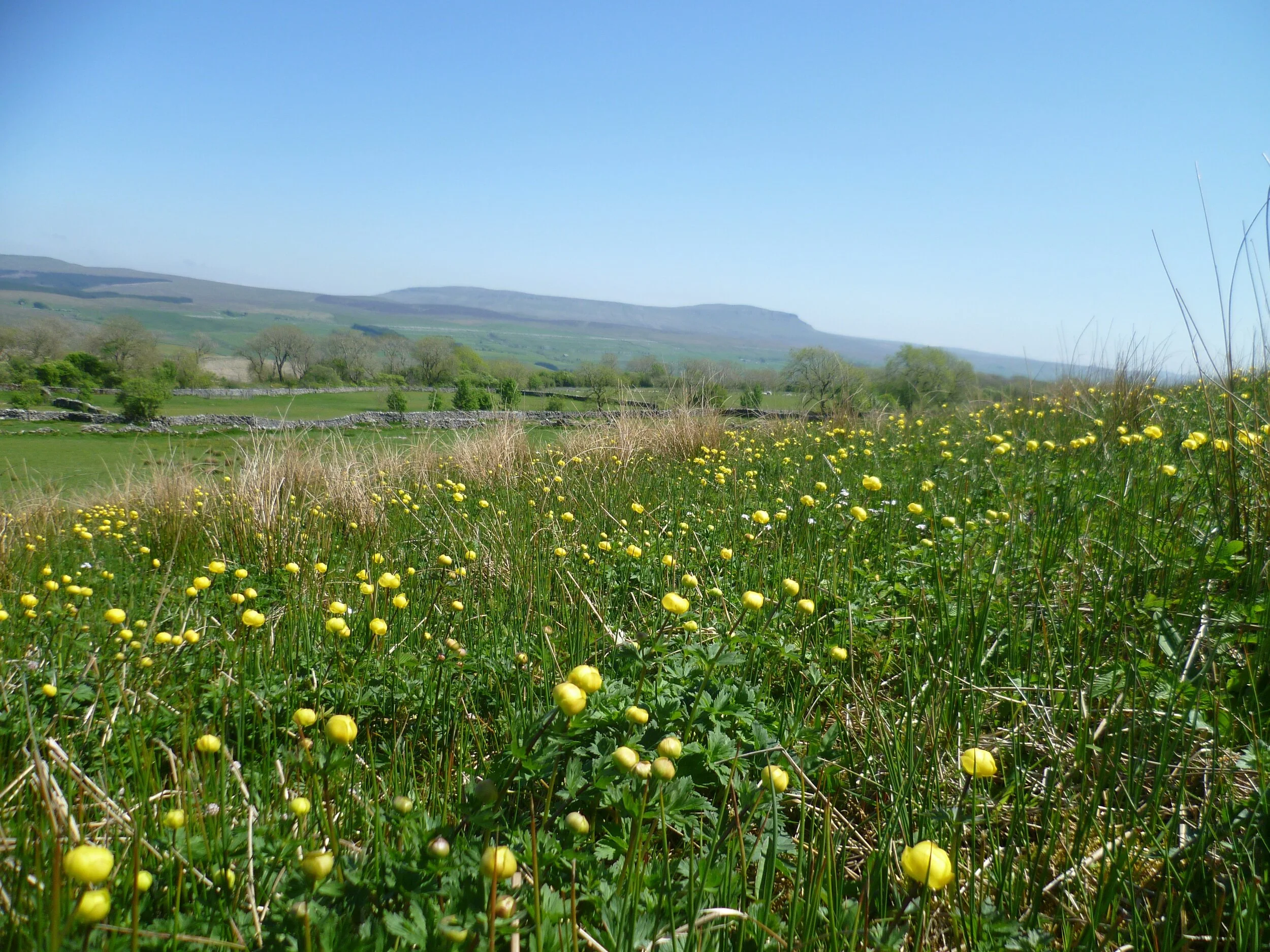England
ECT Media
Background
Colt Park Meadows is a traditional hay meadow located within the Ingleborough National Nature Reserve (NNR) in the Yorkshire Dales National Park. It is owned and managed by Natural England and is both a Site of Special Scientific Interest (SSSI) and a Special Area of Conservation (SAC). The meadows at Colt Park are mostly classified as sweet vernal grass-wood cranesbill grassland (MG3) and are in an area which has been farmed for centuries and has a mosaic of habitats.
Established in 1989 by Roger Smith of Newcastle University, the experiment was initially set up on agriculturally-improved perennial ryegrass-crested dog’s tail grassland to investigate the long-term restoration of grassland diversity. It has since been re-purposed to investigate the impacts of specific land management interventions - grazing by sheep and/or cattle, hay cutting, seed addition and nutrient fertilisation - on ecosystem services, especially carbon storage and resilience to climate extremes such as drought. The work is now overseen by staff in the Soil and Ecosystem Ecology Laboratory at The University of Manchester.
Plot Treatments
The original grazing ‘treatments’ were organised into nine blocks with three replicates for each of the three following treatments on 5m plots:
Autumn grazing with cattle plus sheep, Spring grazing with sheep only
Winter and Spring grazing with sheep only
Autumn grazing with cattle only
Each block was subdivided into three strips which were cut for hay three times per year in June, July and September. Each strip was further subdivided into two, one half remaining unfertilised and the other half treated annually in early May as follows:
Nitrogen - 25kg/hectare
Phosphorus - 12.5kg/hectare
Potassium - in a proprietary NPK ratio of 20-10-10
Farmyard manure - as a light dressing
Each fertilised plot was subdivided into two, with one half receiving a seed addition treatment (sown by hand in autumn 1990, 1991 and 1992). This design created 108 combinations of management treatments. Plant species diversity and hay yields were monitored until 1998. From 2001, the original nine treatment blocks were reduced to three.
Summary of Results
Plant species diversity did not change significantly until 1996. Subsequently, more species were recorded on the unfertilised plots where the sward was cut in July, where grazing occurred in both autumn and spring, and where seed was sown. Conversely, there was a 25% reduction in diversity (to 14 species) in plots ungrazed by cattle in autumn, cut in June and with no seed added. Many sown species appeared in unfertilised plots cut in June and July, grazed in autumn and spring. Some species disappeared, occasionally reappearing during the years of the experiment.
Lowest hay yields were found with autumn and spring grazing, hay cut in June and absence of mineral fertiliser. Highest yields were obtained in fertilised plots cut in September. High yields were also associated with low plant species diversity, and yields generally declined over time.
The experiment may have been successful in part because yellow rattle (Rhinanthus minor) reduced grass competition and facilitated increases in herb diversity. [Yellow rattle is a hemi-parasite of many meadow species, particularly competitive grasses].
Overall, the importance of traditional grazing practices only became evident after eight years. Soil throughout the experiment had a high residual fertility which may have been a factor delaying increases in species diversity.
Further Information
Treatments and monitoring at Colt Park Meadows continue to date. If you are interested in accessing more recent data or in using this site for new collaborative research, please contact Richard Bardgett via the link at the top of this page, or view the latest publications. Contacts: Richard Bardgett (for data), Andrew Hinde (for site access)









